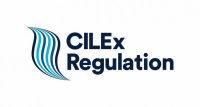 Written by the Legal Ombudsman and posted on behalf of Legal Futures Associate CILEx Regulation
Written by the Legal Ombudsman and posted on behalf of Legal Futures Associate CILEx Regulation
We have spent some time with law firms on a 1:1 basis over the last year and picked up on some common themes which we feel are creating barriers to resolving first tier complaints.
We have updated our Best Practice Complaint Handling Guide to help you to improve your internal complaints process, prevent complaints coming to the Legal Ombudsman or ensure that your decisions are in line with any the ombudsman would recommend.
Our guide is broken up into two key principles and four key steps which we consider is a best practice approach to good complaint handling.
Transparency and language are the two key principles that are important in enabling effective dialogue. Having a transparent and clear complaints procedure in place not only meets your regulatory requirements, but also instils confidence in your service. It shows you are committed to providing a good level of service and will mean you are ready if/when a complaint is made.
Remember that reputation remains the most important factor when consumers are choosing a legal service provider.
Your complaints procedure should ensure your customer is aware of:
- their right to complain to you about your services and your charges;
- how they can make their complaint and who it should be addressed to; and
- what options they have if they remain unhappy after you have completed your review of the complaint, including details of the Legal Ombudsman and when they can make a complaint to us.
Behind this procedure should sit an easy-to-follow complaints process which should support a smooth, accessible and timely complaint journey.
The language and tone used throughout complaint handling is vital in breaking down any barriers and provides an opportunity to resolve issues at first tier. If a customer can understand you and feels you understand them and that you have empathy with their situation, then you are more likely to alleviate any of their concerns and resolve any issues.
The four key steps needed for an effective complaints process: listen, inform, respond and learn. It starts with identifying what approach to take with a complaint and the importance of tailoring your approach, as one size won’t fit all.
The guide addresses important time limits that must be adhered to, considerations to make, how to respond and what to consider if you feel a remedy is appropriate.
Included throughout are case studies and useful links to more detailed guidance which will help you to check and refresh your process.
Please refer to the learning resources page for other guidance notes.










